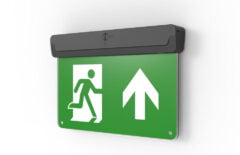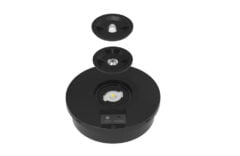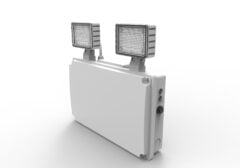Selecting the appropriate emergency lighting system is crucial to ensure the safety and compliance of your building. This article aims to guide building managers and owners in making informed decisions when choosing an emergency lighting system tailored to their specific needs.
Estimated reading time: 3 minutes

1. Understanding Regulations and Standards
The starting point for selecting the right emergency lighting system is a deep understanding of the regulations and standards governing this area. The primary reference for emergency lighting standards in the UK is BS 5266-1:2016, which provides comprehensive guidance on the application and design of emergency lighting systems. BS 5266-1 specifies that emergency lighting systems in the UK must provide a minimum of 1 lux at floor level for at least three hours after a power failure.
In addition to national standards, building owners should consider local building regulations as directed by their council. As they can vary depending on the council and type of building.
2. Assessing Building Requirements:
Conduct a thorough assessment of your building to determine the specific emergency lighting requirements based on its size, occupancy, layout, use and potential risks. Also consider how the building might change over time.
Identifying critical areas that require enhanced lighting during emergencies is very important. These areas would be classed as High-Risk.
- Escape Route Lighting: This illuminates escape routes, ensuring clear visibility of exit paths and stairwells.
- Open Area Lighting: For larger spaces where people may gather during an emergency, open area lighting provides general illumination.
- Anti-Panic Lighting: In areas where panic might ensue, such as in theatres or cinemas, anti-panic lighting helps prevent panic and facilitate calm evacuation.
- High-Risk Task Area Lighting: For locations with specific high-risk tasks, specialized lighting may be necessary to ensure safe shutdown procedures.
3. Types of Emergency Lighting Systems:
Discuss various types of emergency lighting systems available, such as self-contained units or central battery systems. And how are they to be installed maintained or non-maintained systems. Highlight the features, benefits, and limitations of each type.
4. Testing and Maintenance
Regular testing and maintenance are vital to ensure the ongoing functionality of your emergency lighting system. BS 5266-8 provides guidance on testing and maintenance procedures. Choose a system that facilitates easy testing and maintenance, including self-testing capabilities, to simplify the process.
5. Consulting with Experts:
The importance of consulting with experienced professionals or reputable suppliers to get expert advice and recommendations cannot be emphasised enough. There are experts out there that have the background and knowledge to help you.
It might be possible to seek references and case studies from similar facilities. You could then validate the reliability and performance of the chosen emergency lighting system.
6. Integration with Building Systems
Consider how your emergency lighting system integrates with other building systems, such as fire alarms and security systems. Seamless integration can enhance overall safety and simplify system management.
7. Budget and Total Cost of Ownership
While budget considerations are important, it’s crucial not to compromise on safety. Assess the total cost of ownership, which includes installation, maintenance, and potential energy costs, rather than just the initial purchase price.
Conclusion
In conclusion, selecting the right emergency lighting system for your building is a critical decision that requires careful consideration of building needs, regulatory compliance, types of systems, duration of illumination, maintenance, integration, and budget. Investing time and effort in choosing the appropriate system ensures that your building is prepared for emergencies and prioritizes the safety of its occupants. By following a systematic approach and seeking expert guidance, facility managers can select a reliable and effective emergency lighting system that ensures the safety and well-being of occupants in times of crisis.




